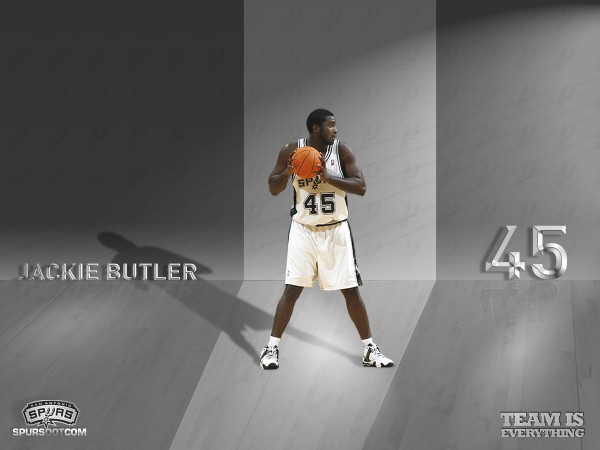Coach Animosity of 1-and-Done Rule Forgets How It Was…
Posted by rtmsf on June 22nd, 2010We ran across an interesting article from Fanhouse’s Brett McMurphy over the weekend that delved into the continuing discomfort that many college coaches have over the 1-and-done rule in light of an NBA Draft on Thursday night that will see anywhere from eight to ten freshmen selected among the lucky few. We understand their complaint. They want continuity in their programs. They want to be able to plan ahead without having to wonder each and every offseason who is staying and who is leaving. Most importantly, they want to be able to hang onto a stud for two or three seasons if it turns out he’s first round material.
The ideal, as proposed by Michigan State’s Tom Izzo, Villanova’s Jay Wright, Notre Dame’s Mike Brey and DePaul’s Oliver Purnell in the article, is that the NBA would adopt the existing MLB model. If a player is good enough to go preps-to-pros, let him go; if he’s not, then he will not be eligible for the draft again until three (or at worst, two) years later. Brey in particular echoed the popular cry amongst the coaching fraternity:
Let them go out after high school [to the NBA] if they’re special and see if we can get at least two years out of them [in college]. I think the baseball rule is the best rule given that we are academic institutions. I don’t know if we can get it to [three years in college], but could we at least get it to two years? And I think two years on a college campus is going to help ’em. He’s going to get an education. But the really special ones, let ’em go after high school. Cut them lose. There’s a handful of them. Let’s at least get two years [before they leave for the NBA]. I’d love to get three years, but I don’t think we can. But let’s at least get two years.
This is the same kind of self-serving thinking (program continuity, fear of re-recruiting players, etc.) by coaches that inspired the NCAA to drastically reduce the amount of time that underclassmen had to “test the waters” this past May. The result was that 28% more early entries (50) jumped headfirst into the draft pool this year even though there was no corresponding increase in the number of draft spots (60) available. The problem is that if the NBA adopts a model similar to major league baseball (and there is no sign that Stern and company are even considering it), we’re only trading one set of problems for another.
The coaches are forgetting how it was before the 1-and-done rule was instituted. From 2003-05 (the last three drafts prior to the rule going into effect), 23 high school seniors entered the NBA Draft directly out of the prep ranks. Some you may have heard of — Lebron James and Dwight Howard, for example — while others are vague memories in the mind’s distant recesses — like James Lang and Jackie Butler. Even though they never made it on campus, most of these players were recruited to play college basketball somewhere. Resources were spent, trips were made, text messages were sent, and letters were delivered. And yet, even though the majority signed to play for coaches like Izzo, Wright, Brey and Purnell, by spring of their senior years they began to see dollar signs in their eyes and bailed on the notion of playing college basketball. Consider, by way of a few prominent examples:
-
2003: Travis Outlaw (Mississippi State); Ndubi Ebi (Arizona)
-
2004: Shaun Livingston (Duke); Josh Smith (Indiana); JR Smith (UNC)
-
2005: Martell Webster (Washington); Gerald Green (Oklahoma State); Louis Williams (Georgia)
Is that what the coaches want to go back to — spending 1-2 years recruiting star players and ultimately getting nothing but a thank-you call out of it as the players move on to NBA riches? By 2005, an average of eight prep-to-pro players were coming out each season. That was with no restriction on draft eligibility once you got to college — a fence-sitting player could still leave after one year of college if he chose to do so (see: Carmelo Anthony). What happens if the coaches get what they want and players are forced into choosing zero years or three years of college under the MLB model? Our best guess is that roughly the top twenty draft prospects would go into the draft each season and the coaches who recruited, caressed, and whispered sweet-nothings at them would be screaming bloody murder that something else needs to be done to protect their interests. And that doesn’t even address what would happen to the quality of play of college basketball when the very best players are barely even first-round worthy.
Of course, none of this debate from the NCAA side matters a whit, because the NBA is going to do only what it thinks will help sell its product in the best possible way. And from our reading of the tea leaves with David Stern over the past five years, we think that if anything, he wants 1-and-done to become 2-and-done, which will have the corollary effect of giving the coaches more continuity anyway.












































